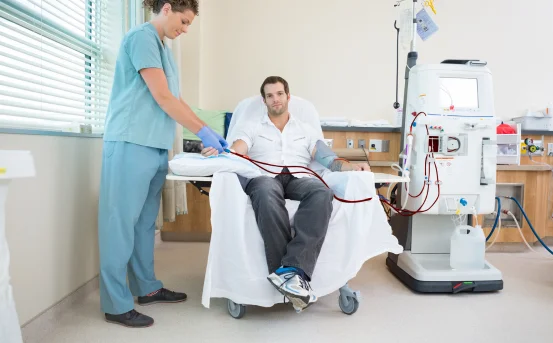Causes for thalamotomy surgery is a specialized neurosurgical procedure that targets the thalamus a key brain structure involved in movement control and sensory processing. This surgery is most often considered when patients suffer from debilitating neurological conditions that do not respond to medications or other less invasive treatments.
The human brain is an incredibly complex organ, composed of multiple structures that work in perfect harmony to control everything from movement and sensation to thought and emotion. One such crucial structure is the thalamus a deep-seated part of the brain that acts as a relay center for motor and sensory signals. When this area malfunctions, it can lead to a variety of neurological symptoms, particularly those affecting movement and coordination.
What Is Thalamotomy Surgery?
Thalamotomy is a surgical procedure that involves creating a small lesion (or destroying a tiny portion) of the thalamus. The thalamus acts as a relay station in the brain, helping process motor and sensory signals. In patients with certain neurological disorders, abnormal activity in the thalamus can result in involuntary movements, tremors, or other disabling symptoms.
The goal of the surgery is to disrupt faulty signals causing these issues providing significant relief from symptoms, especially when other treatment options have failed.
Common Causes for Thalamotomy Surgery
Here are the most common neurological disorders and causes that may necessitate thalamotomy :-
Essential Tremor
Essential tremor (ET) is one of the most common causes for thalamotomy. This is a neurological disorder characterized by uncontrollable shaking, usually affecting the hands, head, or voice. While it is not life-threatening, ET can be socially and physically disabling, especially when it interferes with basic tasks like writing, eating, or dressing.
Why Thalamotomy Is Performed :-
-
When medications like propranolol or primidone fail
-
When tremors are severe and localized (usually on one side of the body)
-
When tremors significantly reduce quality of life
Thalamotomy, particularly focused ultrasound thalamotomy or radiofrequency thalamotomy, can help relieve tremors on the side of the body opposite to the brain area treated.
Parkinson’s Disease
Parkinson’s disease is a progressive neurodegenerative disorder that affects movement. Common symptoms include tremors, rigidity, slowness of movement (bradykinesia), and postural instability.
When Thalamotomy Is Considered :-
-
When tremors are the dominant and disabling symptom
-
When symptoms are medication-resistant
-
When the patient is not eligible for deep brain stimulation (DBS)
Thalamotomy is not a cure for Parkinson’s but can significantly improve tremor symptoms in selected cases.
Multiple Sclerosis (MS) Tremors
Multiple sclerosis is a chronic autoimmune disorder affecting the central nervous system. One of its lesser-known but deeply frustrating symptoms is intention tremor involuntary shaking that worsens with movement.
Role of Thalamotomy :-
-
Thalamotomy is usually a last-resort treatment for MS tremors
-
It may be offered when drug therapy (like clonazepam or isoniazid) doesn’t work
-
It can improve motor coordination and daily function
However, outcomes for MS tremors are less predictable compared to ET or Parkinson’s-related tremors, and the risks are typically weighed more carefully.
Dystonia
Dystonia is a movement disorder where sustained or repetitive muscle contractions cause twisting, abnormal postures, or tremors. It can affect a single body part or multiple areas.
When Is Thalamotomy an Option?
-
In cases of focal dystonia (e.g., hand dystonia or writer’s cramp)
-
When botulinum toxin injections or oral medications are ineffective
-
When the dystonia causes severe functional disability
In certain types of dystonia, pallidotomy (targeting the globus pallidus) is more common, but thalamotomy may be useful in task-specific focal dystonias.
Tourette Syndrome and Intractable Tics
Tourette syndrome is a neurodevelopmental disorder characterized by involuntary tics—sudden, repetitive movements or sounds. While most cases are mild and manageable with behavioral therapy or medication, some individuals experience severe, disabling tics that impact daily life.
Thalamotomy as a Last Resort :-
-
Reserved for severe, medication-resistant cases
-
When tics lead to self-injury or social withdrawal
-
When patients are not candidates for DBS
Thalamotomy in Tourette syndrome is rare but can target motor-related nuclei of the thalamus to dampen abnormal activity.
Post-Stroke or Post-Traumatic Tremors
Some patients develop central tremors after a stroke or traumatic brain injury. These tremors are often resistant to medications and are caused by damage to brain circuits involving the thalamus.
How Thalamotomy Helps :-
-
Can reduce tremor amplitude
-
Helps restore some degree of motor control
-
Offers symptomatic relief when rehabilitation and medications fail
While outcomes can vary, thalamotomy may offer meaningful improvements in selected post-stroke tremor cases.
Criteria for Thalamotomy Surgery
Before a patient is recommended for thalamotomy, several criteria are typically assessed :-
-
Failure of conservative treatments :- including medications, physiotherapy, or Botox injections
-
Localized symptoms :- especially if symptoms are unilateral (one side of the body)
-
Clear diagnosis :- confirmed through imaging, neurologic evaluation, and clinical history
-
No major cognitive or psychiatric issues :- as these could worsen post-surgery
-
Patient preference :- especially when alternatives like DBS are declined or not feasible
Types of Thalamotomy Procedures
There are multiple techniques available for performing thalamotomy :-
-
Radiofrequency Thalamotomy :- Uses a small electrode to heat and destroy targeted brain tissue.
-
Stereotactic Thalamotomy :- Involves precise navigation using a 3D brain map.
-
MRI-Guided Focused Ultrasound (MRgFUS) :- A non-invasive method that uses ultrasound waves to ablate brain tissue without cutting into the skull.
-
Gamma Knife Thalamotomy :- A form of stereotactic radiosurgery using focused radiation beams.
Your doctor will decide the best approach based on the cause, severity of symptoms, and overall health.
Risks and Benefits
Benefits :-
-
Dramatic reduction or elimination of tremors
-
Improved motor function and quality of life
-
Option for patients unsuitable for other surgeries
Risks :-
-
Weakness or numbness
-
Speech or balance issues
-
Infection or bleeding (rare in non-invasive procedures)
-
Cognitive or emotional changes
Hence, thalamotomy is usually reserved for patients with specific, medication-resistant symptoms.
Conclusion
Thalamotomy surgery is a powerful tool in the arsenal of neurological treatment, especially for managing movement disorders like essential tremor, Parkinson’s disease, dystonia, and other tremor-related conditions. It is not the first line of treatment but can offer life-changing results when other methods fall short.























